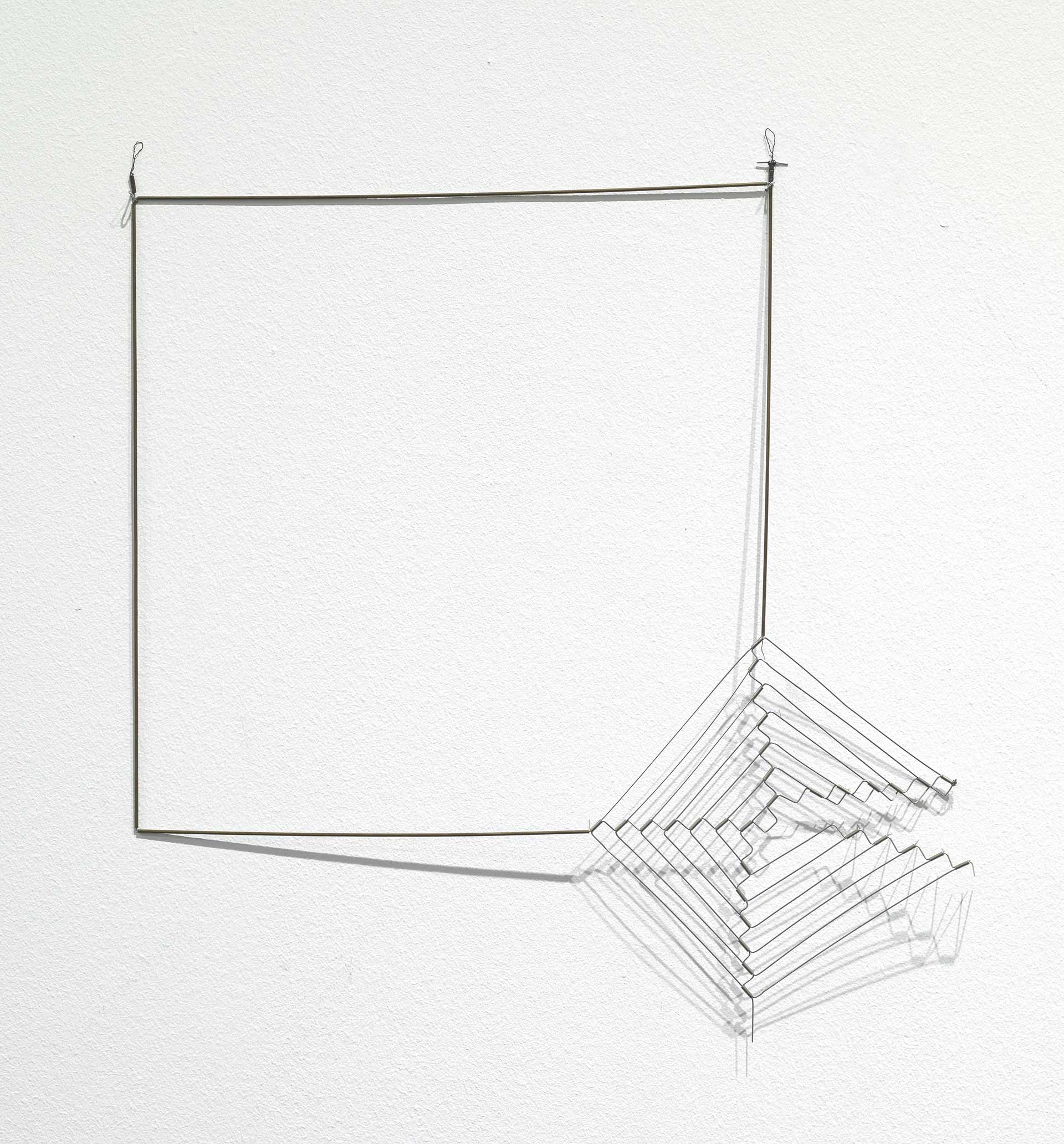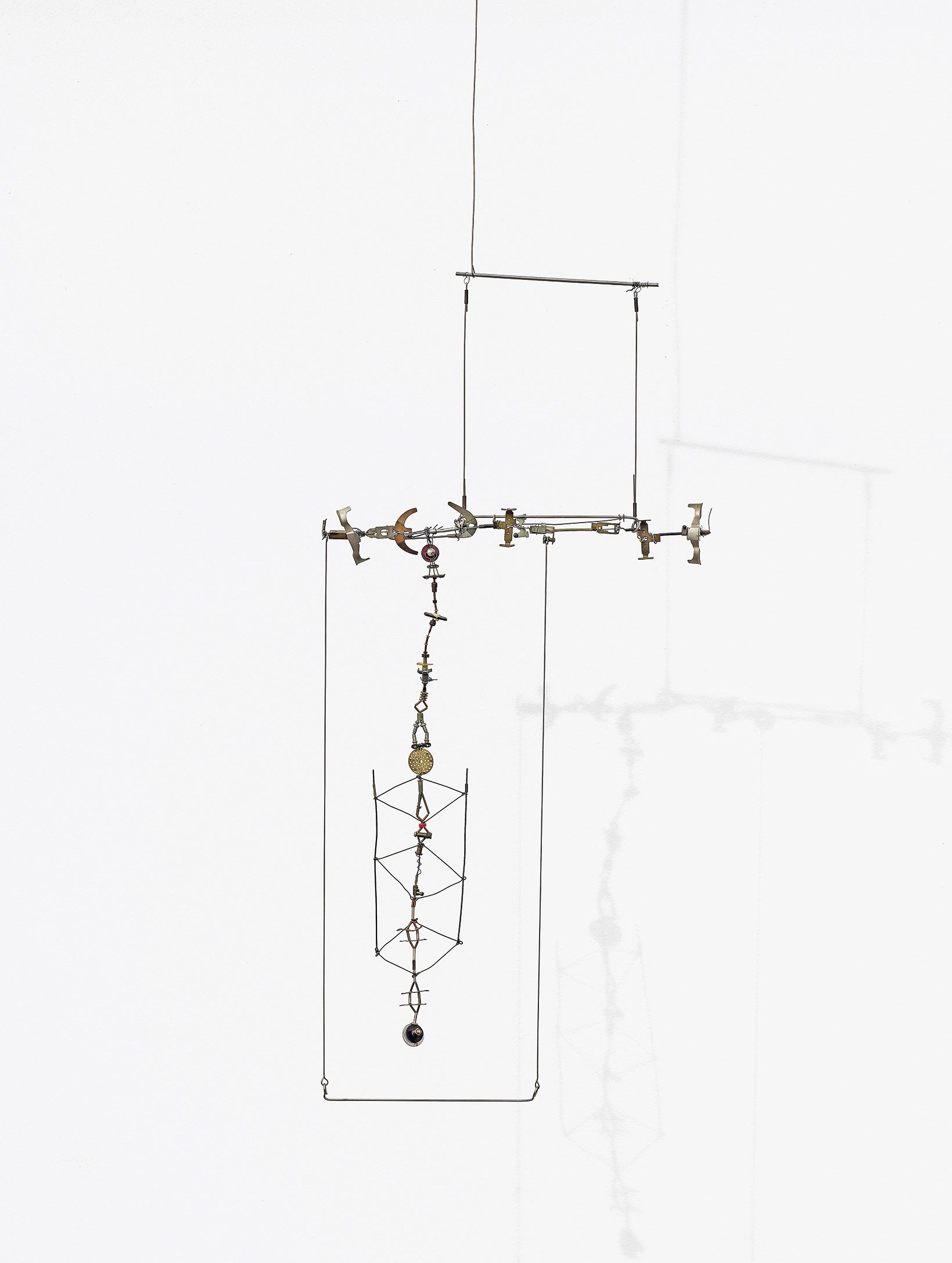Dibujos sin papel (ca. 1976–88)
The Dibujos sin papel (Drawings without Paper, ca. 1976–88) series, by far one of Gego’s more conceptually complex bodies of work, marked a crucial turning point in her artistic evolution. Made from wire, recycled metal scraps, and small pieces of hardware, these minimal sculptures hang from the ceiling or wall, as if drawn onto the vertical surface and into space, and function as paperless and frameless constructions. On view in this section is a selection of works from this series, which offered the artist infinite possibilities for modulating space. She also challenged the autonomy of sculpture by subordinating the work to the wall, thereby ascribing the two-dimensional qualities of drawing to three-dimensional forms.
Some early examples feature arrangements of planes that project outward, while others are structured around simple vertical or horizontal lines, or crisscross patterns. By 1979 these works began to take the form of empty square or rectangular frames. In the early 1980s Gego began including circular structures made with linear meshes, thread, and wire. From 1984 onward her focus shifted to representations of deformed or broken grids—geometric compositions of interrupted or unfinished linear patterns. In her later Dibujos sin papel, Gego gravitated toward a smaller scale and eliminated any type of frame structure, instead generating frayed, zigzagging linear configurations with eccentric geometric compositions.



